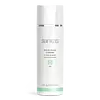What's inside
What's inside
 Key Ingredients
Key Ingredients

 Benefits
Benefits

 Concerns
Concerns

 Ingredients Side-by-side
Ingredients Side-by-side

Water
Skin ConditioningDecyl Glucoside
CleansingHoney
HumectantSimmondsia Chinensis Seed Oil
EmollientDisodium Cocoamphodiacetate
CleansingSodium Lauroyl Lactylate
EmulsifyingGlyceryl Caprylate/Caprate
EmollientCoco-Betaine
CleansingPEG-60 Almond Glycerides
EmulsifyingPolyacrylamide
Glyceryl Stearate
EmollientPEG-100 Stearate
Nonfat Dry Milk
Skin ConditioningSodium Hyaluronate
HumectantPEG-50 Shea Butter
EmulsifyingC13-14 Isoparaffin
EmollientSodium Lauroyl Glutamate
Laureth-7
EmulsifyingPEG-7 Glyceryl Cocoate
EmulsifyingStearyldimoniumhydroxypropyl Laurylglucosides Chloride
CleansingGlucose
HumectantLactic Acid
BufferingParfum
MaskingPhenoxyethanol
PreservativeCaprylyl Glycol
EmollientEthylhexylglycerin
Skin ConditioningHexylene Glycol
EmulsifyingWater, Decyl Glucoside, Honey, Simmondsia Chinensis Seed Oil, Disodium Cocoamphodiacetate, Sodium Lauroyl Lactylate, Glyceryl Caprylate/Caprate, Coco-Betaine, PEG-60 Almond Glycerides, Polyacrylamide, Glyceryl Stearate, PEG-100 Stearate, Nonfat Dry Milk, Sodium Hyaluronate, PEG-50 Shea Butter, C13-14 Isoparaffin, Sodium Lauroyl Glutamate, Laureth-7, PEG-7 Glyceryl Cocoate, Stearyldimoniumhydroxypropyl Laurylglucosides Chloride, Glucose, Lactic Acid, Parfum, Phenoxyethanol, Caprylyl Glycol, Ethylhexylglycerin, Hexylene Glycol
Water
Skin ConditioningDisodium Cocoamphodiacetate
CleansingDisodium Cocoyl Glutamate
CleansingLactic Acid
BufferingSaccharide Isomerate
HumectantPapain
Skin ConditioningBromelain
Skin ConditioningSaccharum Officinarum Extract
MoisturisingCitrus Medica Limonum Fruit Extract
Skin ConditioningCitrus Aurantium Dulcis Fruit Extract
MaskingPyrus Malus Fruit Extract
Skin ConditioningCamellia Sinensis Leaf Extract
AntimicrobialCitrus Paradisi Peel Oil
MaskingSodium Phytate
Citric Acid
BufferingSodium Citrate
BufferingPhenoxyethanol
PreservativeCaprylyl Glycol
EmollientEthylhexylglycerin
Skin ConditioningHexylene Glycol
EmulsifyingWater, Disodium Cocoamphodiacetate, Disodium Cocoyl Glutamate, Lactic Acid, Saccharide Isomerate, Papain, Bromelain, Saccharum Officinarum Extract, Citrus Medica Limonum Fruit Extract, Citrus Aurantium Dulcis Fruit Extract, Pyrus Malus Fruit Extract, Camellia Sinensis Leaf Extract, Citrus Paradisi Peel Oil, Sodium Phytate, Citric Acid, Sodium Citrate, Phenoxyethanol, Caprylyl Glycol, Ethylhexylglycerin, Hexylene Glycol
 Reviews
Reviews

Alternatives
Ingredients Explained
These ingredients are found in both products.
Ingredients higher up in an ingredient list are typically present in a larger amount.
Caprylyl Glycol is a humectant and emollient, meaning it attracts and preserves moisture.
It is a common ingredient in many products, especially those designed to hydrate skin. The primary benefits are retaining moisture, skin softening, and promoting a healthy skin barrier.
Though Caprylyl Glycol is an alcohol derived from fatty acids, it is not the kind that can dry out skin.
This ingredient is also used as a preservative to extend the life of products. It has slight antimicrobial properties.
Learn more about Caprylyl GlycolDisodium Cocoamphodiacetate is a surfactant and helps cleanse skin. It is created from the fatty acids of coconut oil.
Surfactants help rinse oil, dirt, and other pollutants easily from skin. It has a faint fruit-like scent.
Ethylhexylglycerin (we can't pronounce this either) is commonly used as a preservative and skin softener. It is derived from glyceryl.
You might see Ethylhexylglycerin often paired with other preservatives such as phenoxyethanol. Ethylhexylglycerin has been found to increase the effectiveness of these other preservatives.
Hexylene Glycol is a surfactant. Glycols are a class of alcohols. Hexylene Glycol is a surfactant and emulsifier.
As a surfactant, Hexylene Glycol helps gather dirt and oil on your skin to be washed away.
As an emulsifier, Hexylene Glycol helps keep water and oil together. This prevents them from separating in a product. Hexylene Glycol also thins out the texture of a product by lessening viscosity.
Hexylene Glycol has a small molecular weight.
Learn more about Hexylene GlycolLactic Acid is another well-loved alpha hydroxy acid (AHA). It is gentler than glycolic acid but still highly effective.
Its main role is to exfoliate the surface of the skin by loosening the “glue” that holds dead skin cells together. Shedding those old cells leads to smoother, softer, and more even-toned skin.
Because lactic acid molecules are larger than glycolic acid, they don’t penetrate as deeply. This means they’re less likely to sting or irritate, making it a great choice for beginners or those with sensitive skin.
Like glycolic acid, it can:
Lactic acid also acts as a humectant (like hyaluronic acid). It can draw water into the skin to improve hydration and also plays a role in the skin's natural moisturizing factor (NMF) in the form of sodium lactate.
Studies show it can boost ceramide production to strengthen the skin barrier and even help balance the skin’s microbiome.
To get results, choose products with a pH between 3-4.
Lower strengths (5-12%) focus on surface exfoliation; higher strengths (12% and up) can reach deeper in the dermis (deeper, supportive layer) to improve skin texture and firmness over time.
Though it was originally derived from milk, most modern lactic acid used in skincare is vegan. It is made through non-dairy fermentation to create a bio-identical and stable form suitable for all formulations.
When lactic acid shows up near the end of an ingredient list, it usually means the brand added just a tiny amount to adjust the product’s pH.
Legend has it that Cleopatra used to bathe in sour milk to help reduce wrinkles.
Lactic acid is truly a gentle multitasker: it exfoliates, hydrates, strengthens, and brightens. It's a great ingredient for giving your skin a smooth, glowing, and healthy look without the harshness of stronger acids.
Read more about some other popular AHA's here:
Learn more about Lactic AcidPhenoxyethanol is a preservative that has germicide, antimicrobial, and aromatic properties. Studies show that phenoxyethanol can prevent microbial growth. By itself, it has a scent that is similar to that of a rose.
It's often used in formulations along with Caprylyl Glycol to preserve the shelf life of products.
Water. It's the most common cosmetic ingredient of all. You'll usually see it at the top of ingredient lists, meaning that it makes up the largest part of the product.
So why is it so popular? Water most often acts as a solvent - this means that it helps dissolve other ingredients into the formulation.
You'll also recognize water as that liquid we all need to stay alive. If you see this, drink a glass of water. Stay hydrated!
Learn more about Water